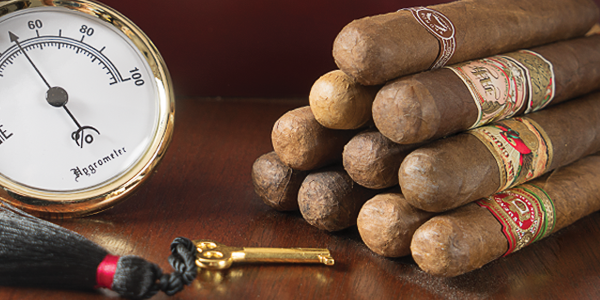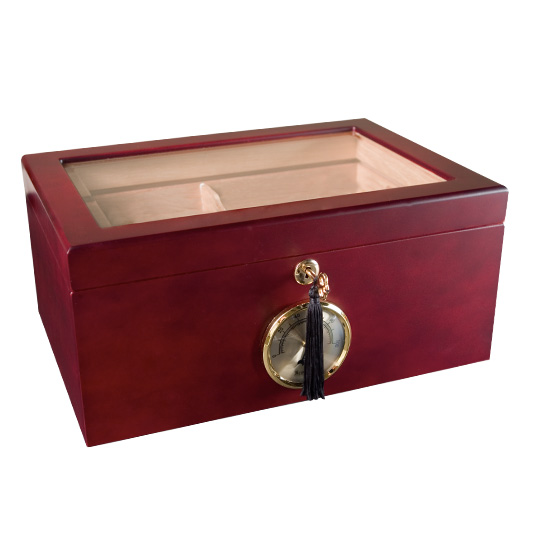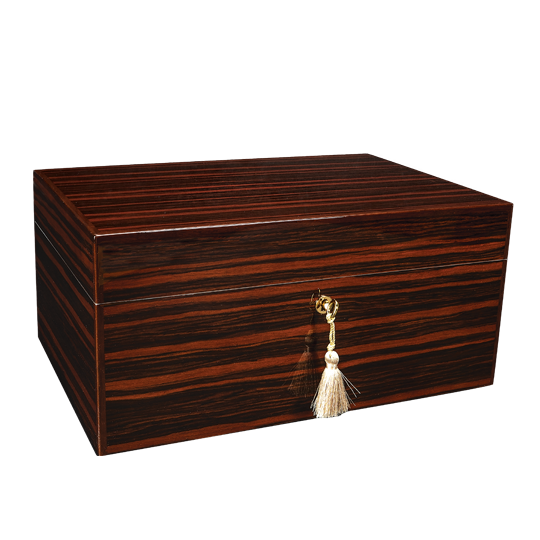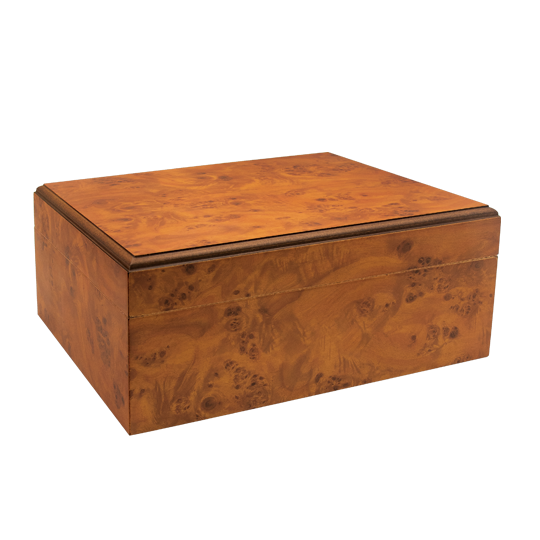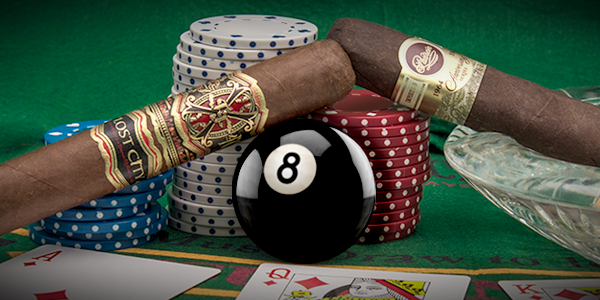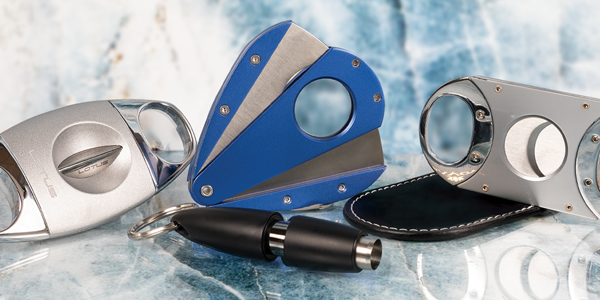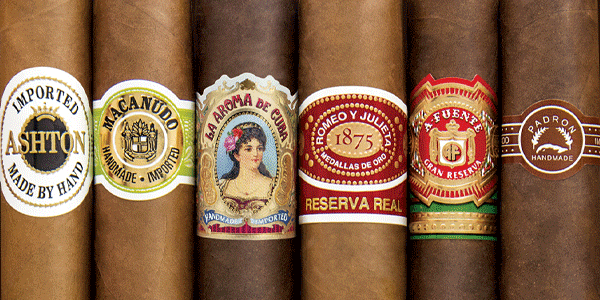How Long Do Cigars Last in a Humidor?
Cigar aficionados may wait for several days, weeks, or even years before they smoke the cigars they’ve purchased. Saving a cigar for a special occasion is common. During the that time, it’s critical to keep your cigars fresh because they are made by hand, and when cigars go bad, they become unsmokable. A quality humidor is the most obvious and practical means for properly storing and protecting your cigars. There are many alternatives for storing cigars without a humidor, but they all provide the same function as a humidor: they keep your cigars humidified.
Humidor Maintenance and Quality
The best conditions for storing cigars are roughly 70% RH (relative humidity) and 70 degrees Fahrenheit. A range of 65-72% RH and 65-72 degrees is acceptable, and cigar smokers prefer a certain humidity and temperature based on how soft or firm they like their cigars to be when they smoke them.
Most cigar humidors are made of Spanish cedar or a comparable material, but there are several types of humidors today, including coolerdors, acrylic humidors, travel humidors, and traditional desktop humidors. Solid wood versus glass top humidors require slightly different maintenance. A humidor must have a tight seal and a humidification system to function properly. That’s why you can’t store cigars in their original boxes outside of a humidor for a long period of time, or they will inevitably dry out. It’s also critical that you only use distilled water or propylene glycol solution when you set up a new humidor. Humidors for beginners start around $30-50, but most humidors cost closer to $100 and up. Handmade boxes can go for several hundred and even thousands of dollars like those made in Paris by Elie Bleu. Size, finish, and materials impact the price of a good humidor.
Finally, a reliable hygrometer is essential for monitoring the temperature and humidity in a humidor to maintain consistent conditions. Calibrate your hygrometer seasonally to ensue it’s providing an accurate reading. Regardless of how much you spend on a humidor, your cigars will only stay fresh if you replenish the humidity regularly, rotate your cigars, and maintain a consistent temperature. Moving the cigars from the top shelf to the bottom, and vice versa, ensures the cigars closest to your humidification source won’t absorb a disproportionate amount of moisture. In addition to checking the humidity, you can gently pinch your cigars to see that they’re not too soft and spongy nor too hard. Dry cigars crackle when they’re squeezed, and the wrapper can crack. Don’t overfill your humidor with cigars. Leave about 20-25% of the interior space free. Humidity and air will circulate more freely as a result, which helps to keep your cigars fresh as you age them.
Low-maintenance humidification solutions, such as Boveda packs, have made it easy to convert simple household containers like Tupperware and mason jars into humidors if you need a temporary storage option before you invest in a traditional humidor. Or, you can buy a humidor bag, which will keep your cigars fresh for six months or longer, depending how many you’re storing.
Aging Cigars in a Humidor
You can age cigars like wine. As the months and years go by, a cigar’s flavor evolves. How it evolves depends on how well you take care of your humidor and what other kinds of cigars you’re storing inside. Some aficionados believe fresh-rolled cigars are better and will smoke most of the cigars they buy within a week or two, but it entirely depends on the cigar and the cigar-maker who blended it. A cigar made from high-quality, well-aged tobaccos will taste great off the shelf, and it will continue to taste great if you decide to continue aging it. A bad cigar, however, will not improve much with age.
Cigars absorb the flavor and the oils of what’s around them. That’s why you should never store flavored cigars in a humidor with non-flavored cigars – or all your cigars will taste flavored, and your humidor will absorb the artificial taste of flavored cigars and continue to pass it on to any cigars you store in the future. Invest in a humidor with dividers and shelves to separate your cigars if you don’t want the taste and aroma of certain cigars to marry with the taste of others.
The only way to know if your cigars will get better with age is to buy a handful or a box of one brand, and smoke a few as soon as you get them, then rest the other cigars. Smoke one after a few weeks, and then another after a few months, and smoke one after a year if you can wait that long. Some cigars improve dramatically as they continue to age. Others mellow out, and the flavor can dissipate if they’ve reached their peak. Two of the same cigars can taste different if you age them for different amounts of time.
Seasoning a New Humidor
The first step to aging your cigars is seasoning a new humidor according to the process we’ve outlined in detail. Setting up a new humidor can take a few days to a week or longer depending on the type of box you’re using and the humidification system you’ve chosen. If you’re using a traditional floral foam humidification device, follow the steps below.
What You Need to Season a Humidor
- Humidification Unit
- Hygrometer
- Hygrometer Calibration Kit
- Propylene Glycol Solution
- 1 Gallon of Distilled Water
- A fresh, unused kitchen sponge
- A glass dish or stainless steel bowl
- A clean towel
Steps to Setting Up a Humidor
Step 1. Calibrate the hygrometer
Step 2. Fill the humidification unit
Step 3. Wipe down the interior of the humidor to humidify the box
Step 4. Take your first humidity reading after 3 to 5 days
Step 5. Fill the humidor with cigars after you’ve achieved a consistent 70% RH
NOTE: If you’re using Boveda packs to season a new humidor, a different process is required. Insert one 60-gram 84% RH Boveda pack in the humidor for every 25 cigars of capacity, close the lid and let the box sit for two weeks (with no cigars inside). For example, if your humidor can hold 50 cigars, you’ll need two 84% RH Boveda packs. After two weeks, your humidor will have acclimated to a consistent humidity level. Remove the 84% RH packs, and replace them with a lower RH (65%, 69%, or 72%) to humidify your cigars. Place your cigars in the box.
Perform Regular Checks
Connoisseurs who age their cigars pay attention to them. Invest in a digital hygrometer for the most accurate readings, and regularly check the humidity and temperature. Rotate your cigars every couple of weeks, and prepare your humidor for different seasons. Inspect your cigars for any signs of plume versus mold. Small, white dots are plume, and they indicate your cigars are aging perfectly, but blue green mold is devastating to handmade cigars and to your humidor. Throw out moldy cigars immediately, and clean your humidor to remediate it. Using the right water in your humidor greatly minimizes the chance for mold to grow.
Some cigar lovers will dry-box cigars prior to smoking them. They will remove their cigars from the humidor and place them in an empty un-humidified cigar box for a few days to allow some of the moisture in the cigars to dissipate to ensure the cigars burns with more ease.
Start a Cigar Collection
Start a cigar collection as you learn how different cigars taste and your palate develops. Another way to tell the difference between cigars you’ve aged and the ones you smoke right out the box is to keep a cigar journal and record notes about your favorite smokes. Smoking, waiting, and smoking more is the best way to take the guesswork out of aging cigars.

